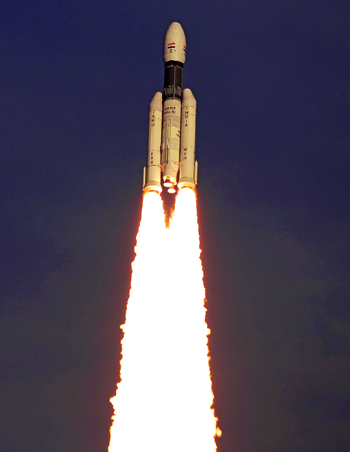INDIAN ARMED FORCES CHIEFS ON OUR RELENTLESS AND FOCUSED PUBLISHING EFFORTS

The insightful articles, inspiring narrations and analytical perspectives presented by the Editorial Team, establish an alluring connect with the reader. My compliments and best wishes to SP Guide Publications.

"Over the past 60 years, the growth of SP Guide Publications has mirrored the rising stature of Indian Navy. Its well-researched and informative magazines on Defence and Aerospace sector have served to shape an educated opinion of our military personnel, policy makers and the public alike. I wish SP's Publication team continued success, fair winds and following seas in all future endeavour!"

Since, its inception in 1964, SP Guide Publications has consistently demonstrated commitment to high-quality journalism in the aerospace and defence sectors, earning a well-deserved reputation as Asia's largest media house in this domain. I wish SP Guide Publications continued success in its pursuit of excellence.
Successfully Launched
The success of GSLV Mk III-D2 marks an important milestone in the Indian space programme towards achieving self-reliance in launching heavier satellites

The Indian GSAT-29 communication satellite was successfully launched by the second developmental flight of Geosynchronous Satellite Launch Vehicle Mark III (GSLV Mk III-D2) on November 14 this year from the Satish Dhawan Space Centre (SDSC) SHAR at Sriharikota in Andhra Pradesh. The GSLV Mk III is a three-stage heavy lift launch vehicle developed by the Indian Space Research Organisation (ISRO).
For this mission, the GSLV Mk III-D2 lifted off from the Second Launch Pad of SDSC SHAR at 17:08 hours Indian Standard Time, carrying the 3423 kg GSAT-29 satellite. About 17 minutes after the launch, the launch vehicle injected the GSAT-29 satellite into the Geosynchronous Transfer Orbit (GTO) as planned.
After injection, ISRO’s Master Control Facility at Hassan took over control of the satellite. In the coming days, three orbit raising manoeuvres will be executed to position the satellite in the Geostationary Orbit at its designated location.
In the GSLV Mk III-D2, two massive boosters with solid propellant constitute the first stage, the core with liquid propellant form the second stage and the cryogenic engine make up the final stage.
The GSAT-29 is a multiband, multi-beam communication satellite, intended to serve as a test bed for several new and critical technologies. Its Ku-band and Ka-band payloads are configured to cater to the communication requirements of users including those in the remote areas especially from Jammu & Kashmir and the North-Eastern regions of India.
In addition, the Q/V-Band communication payload onboard is intended to demonstrate the future high throughput satellite system technologies. Geo High Resolution Camera will carry out high resolution imaging. Optical Communication Payload will demonstrate data transmission at a very high rate through optical communication link.
After the successful launch, ISRO Chairman Dr K. Sivan said, “India has achieved a significant milestone with our heaviest launcher lifting off the heaviest satellite from Indian soil. The launch vehicle has placed the satellite with precision in its intended orbit. I congratulate entire team of ISRO involved in this project for this achievement.”
Declaring the GSLV Mk III operational, Dr K. Sivan announced that Chandrayaan-2 lunar mission and the human space flight mission Gaganyaan will be launched by the GSLV Mk III-D2 heavy-lifter. Jayakumar B, Mission Director, GSLV Mark III, said that it was the guidance by the Mentors at ISRO that helped the team to march ahead and overcome all obstacles. “The industry partners too played a key role in the success of this mission,” he said. K. Pankaj Damodar, Project Director, GSAT-29 said the launch will help to bridge the digital divide. He also said that several next generation payload technologies will be demonstrated with this mission soon.
The success of GSLV Mk III-D2 marks an important milestone in the Indian space programme towards achieving self-reliance in launching heavier satellites. The success of this flight also signifies the completion of the experimental phase of GSLV Mark III. The first successful mission of GSLV Mark III was an experimental suborbital flight in 2014. Subsequently, GSLV Mark III-D1 launched GSAT-19, a high throughput communication satellite, with a lift-off mass of 3150 kg, into GTO on June 5, 2017.





